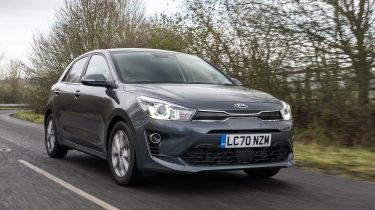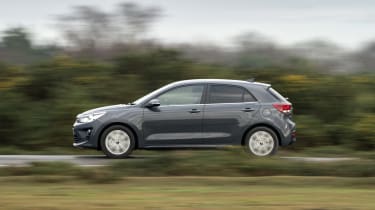Kia Rio (2017-2023) review - MPG, CO2 and running costs
The Rio offers decent fuel economy despite some old-tech powertrains, and the seven-year warranty should benefit residual values
Low running costs are often at the forefront of buyers’ minds when choosing a new supermini, and the Rio excels in that area. It's no longer the cheapest to buy, but it won’t cost the earth to fuel or maintain.
The entry-level 1.2-litre petrol engine manages a claimed 49.6mpg on the WLTP combined cycle and emits 128g/km of CO2 in 1 spec and 130g/km in 2 spec. The 99bhp 1.0-litre petrol fairs slightly better, managing 52.3mpg on the combined cycle (dropping to 50.4 for automatic models). CO2 emissions are 123g/km for manuals and 127g/km for autos.
Mild-hybrid versions don’t bring the improvements in fuel economy and emissions some might expect. 3 grade manual and automatic models are both claimed to be capable of 52.3mpg (identical to some lesser-equipped Rios with no 48-volt hybrid system). A manual gearbox means emitting 122g/km of CO2 while an auto translates to 123g/km.
Range-topping mild-hybrid GT-Line S models perform worse still. Again, the manual and automatic versions are claimed to come with the same fuel economy – 51.4mpg – and again the auto emits 1g/km more CO2 than the manual – 125 vs 126.
Insurance Groups
The Rio ranges from Group 4 to Group 9 for insurance purposes, so it'll be relatively cheap to insure. It is 1 and 2 grade models with the 1.2-litre petrol engine that sit in group 4, while 3 and GT-Line S models sit in group 9.
Depreciation
The Rio's seven-year, 100,000-mile warranty is transferable between owners, which is a real selling point on the second-hand market. However, residual values of around 40 per cent are fairly average in the supermini class.






